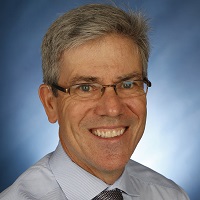 |
||
Dr Dornhoffer is holder of the Samuel D. McGill, Jr., Endowed Chair in Otolaryngology Research and is Director of the Division of Otology and Neurotology at UAMS and Arkansas Children’s Hospital. He is currently the Executive Director of the Prosper Meniere Society. Dr Dornhoffer received his medical degree from the University of Kansas Medical School, Kansas City, Kansas, in 1988. He completed his residency in Otolaryngology-Head and Neck Surgery at UAMS. This was followed by fellowship training in otology and neurotology with Professor Jan Helms as the University of Würzburg, Germany, followed by additional training in skull base surgery with Professor Ugo Fisch at the University of Zurich, Switzerland. He has been on faculty at UAMS and Arkansas Children’s Hospital since 1994. His clinical interest has focused on prosthesis development for reconstruction of the ossicular chain and techniques in tympanoplasty and canal wall reconstruction utilizing cartilage. His current research has focused on the application of repetitive transcranial magnetic stimulation (rTMS) for tinnitus.
Dr Dornhoffer has had funding from the National Space Biomedical Research Institute, the Deafness Research Foundation, and the Tinnitus Research Consortium. He has also led a project on the National Institutes of Health Center of Biomedical Research Excellence (COBRE).
Cochlear Implantation: Past, Present and Future
This presentation will discuss the development of the cochlear implant from single channel implants, controversy, and acceptance as the age of implantation has continued to drop and outcomes improve. A discussion of the different devices will be followed by the future trends of hybrid devices, single sided deafness candidacy and hearing preservation protocols. Finally, a personal perspective of hearing with a cochlear implant will be discussed and highlighted with audio simulations.
Techniques in Ossiculoplasty
The success of ossiculoplasty depends on reconstruction techniques, prosthesis qualities, and middle ear disease severity. This presentation will discuss consistencies in the middle ear anatomy that can be used in a standardized approach to ossicular reconstruction that are reproducible and easy to teach. Also those middle ear factors which influence hearing results will be discussed as the Ossiculoplasty Outcomes Parameter System (OOPS). The effect of the middle ear environment will be discussed in context of short term (1 year) and long term (over 5 years) hearing results in several hundred patients. Complications and barriers to long term follow up will be likewise addressed.
Techniques in Cartilage Tympanoplasty
Many graft materials are available for the reconstruction of tympanic membrane (TM) defects, with temporalis fascia and perichondrium being the most common. In certain situations, such as atelectatic TM, cholesteatoma, and revision cases, results with the more traditional materials have not been as gratifying. Cartilage, because of its more rigid quality, tends to resist resorption and retraction in these more difficult cases. While the concept of TM reconstruction with cartilage is not new, its routine acceptance as an alternative graft material has been hampered by lack of understanding of the surgical indications, techniques, and functional results of this material.
Our experience with over 4000 cartilage tympanoplasties will be discussed. We have found the functional results with regard to hearing and graft-take to be excellent compared to more traditional techniques, with over 95% graft take. Hearing is comparable to fascia. Both the perichondrium island flap and the mosaic reconstruction, with cartilage harvested from the tragus and concha, respectively, have been utilized and proven advantageous in TM reconstruction. The palisade technique has proven useful when ossiculoplasty is performed whereas the island flap is utilized in large perforations and atelectatic ears. This presentation will provide instruction in surgical indications, both cartilage techniques, outcome, and complication management.
|
